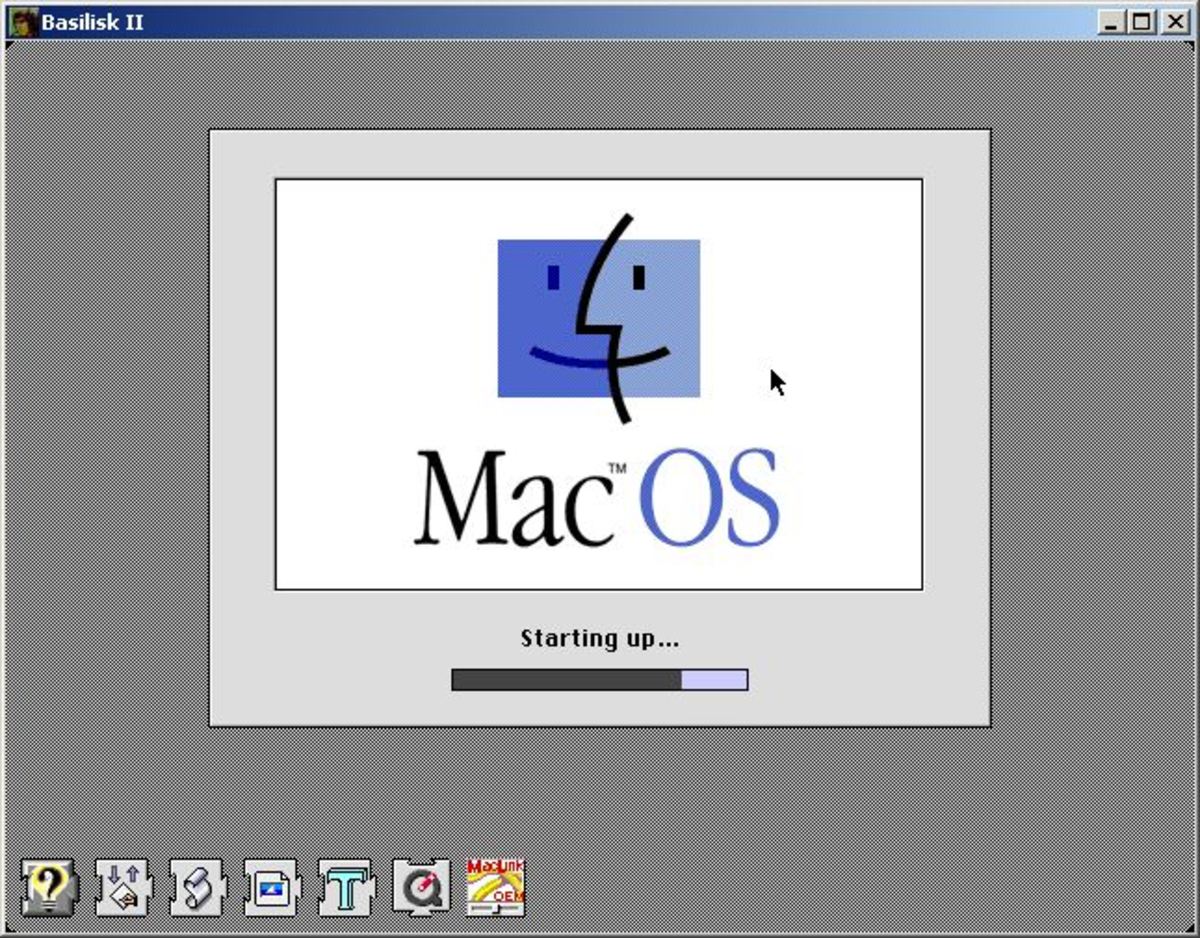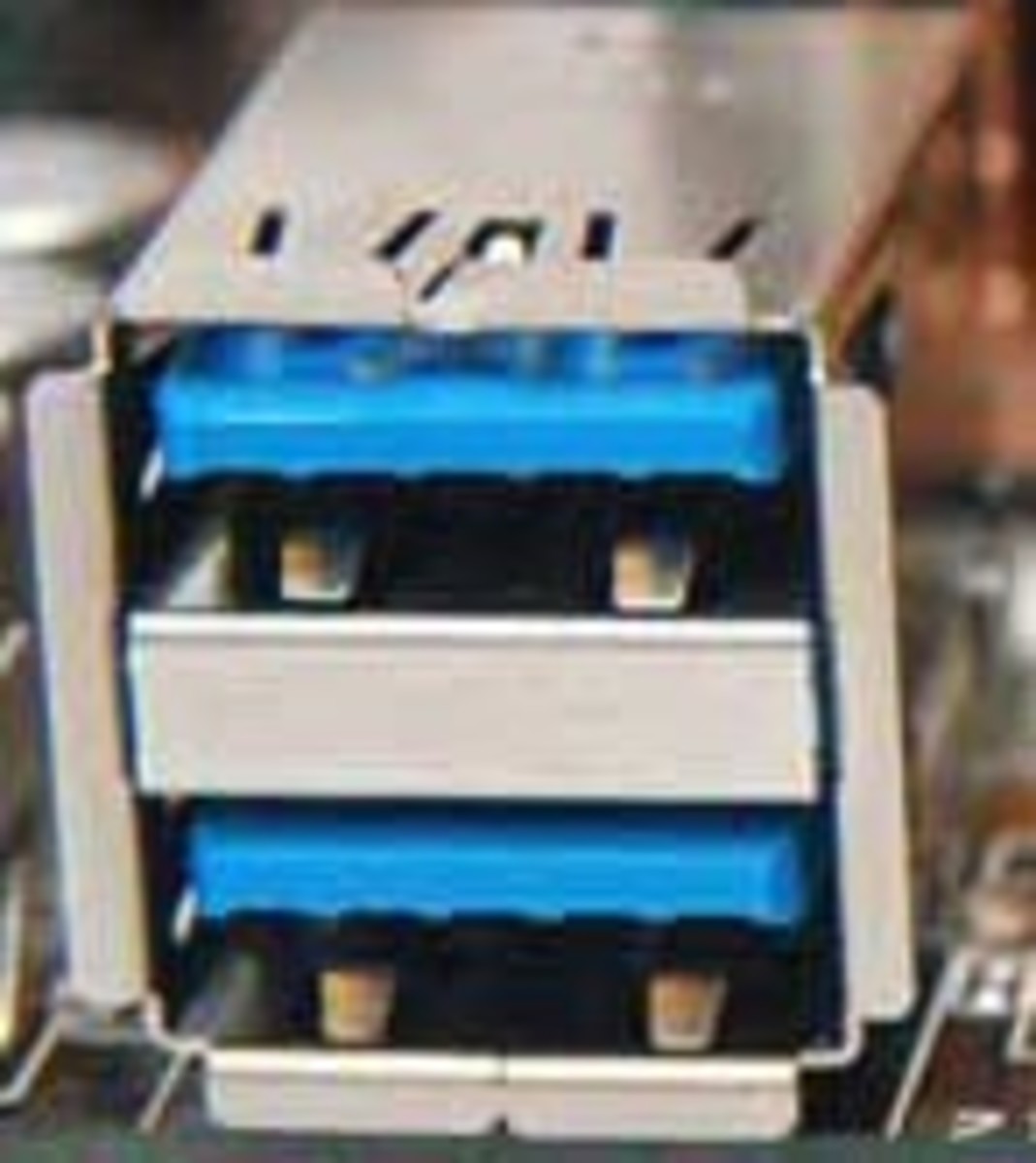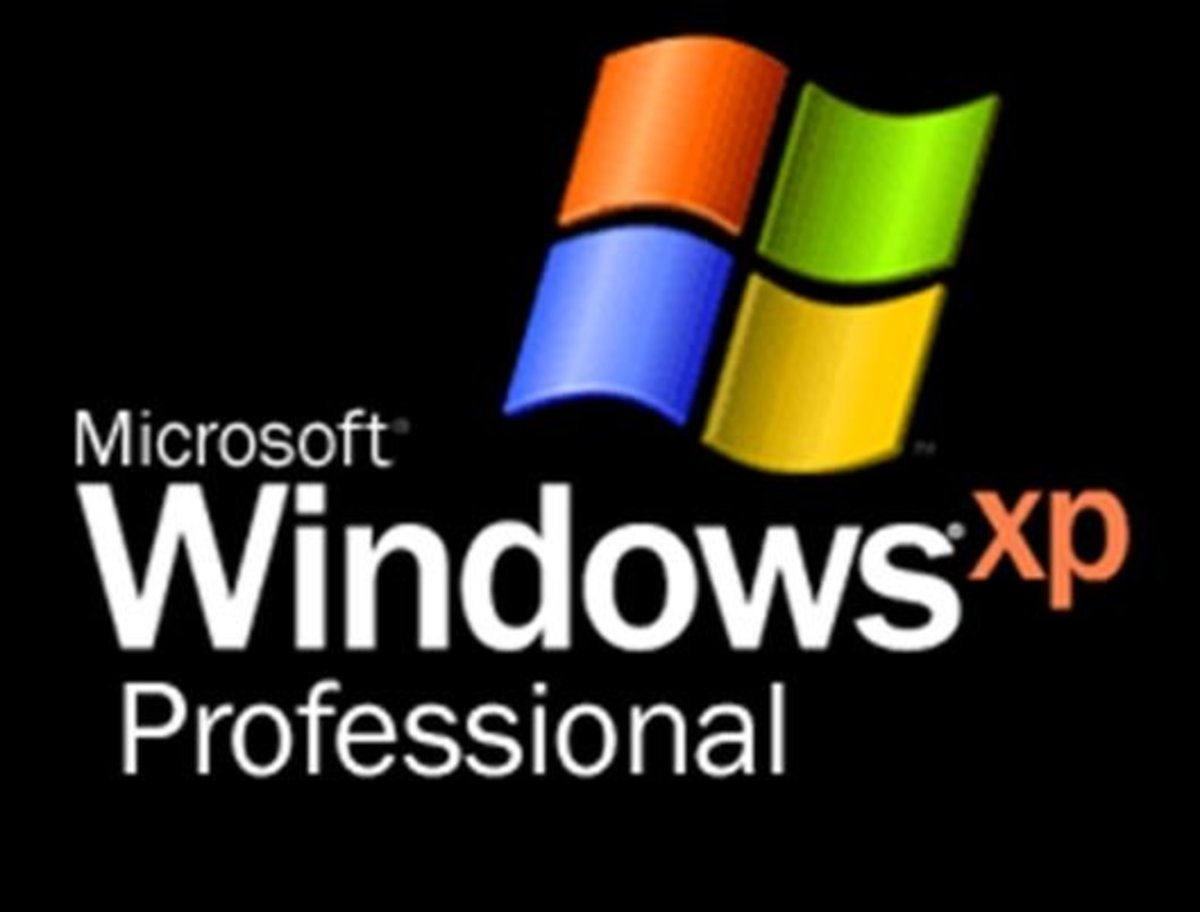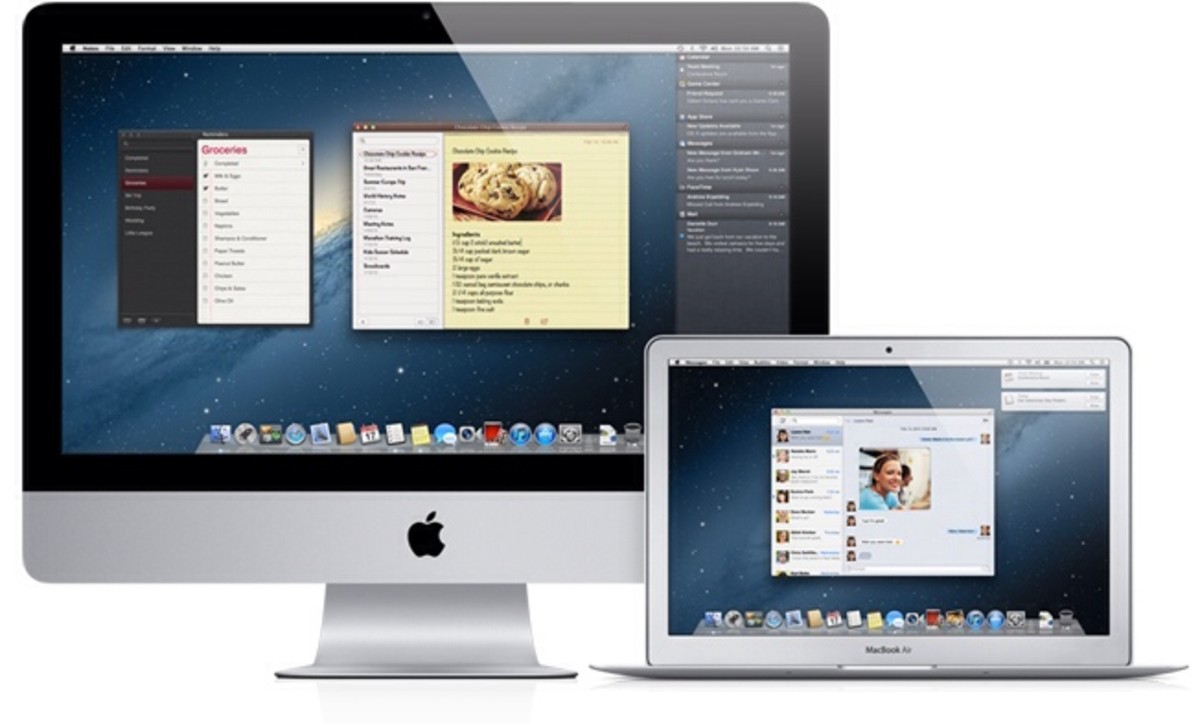Internet of the Future
Introduction
- Internet was recently identified as the most effective technical invention of the twentieth century that enormously affected and constantly changed all aspects of our day-to-day lives.
- The current Internet technology is considered as remarkable success of the current technology advancements. The Internet and the associated services and enabled applications today have transformed the lives of millions of people in different areas such as democracy, education, healthcare, entertainment, commerce and finance.
- Internet shapes new forms of end communications, collaboration, creativity, human interactions and innovation.
Figure 1: The world of Internet
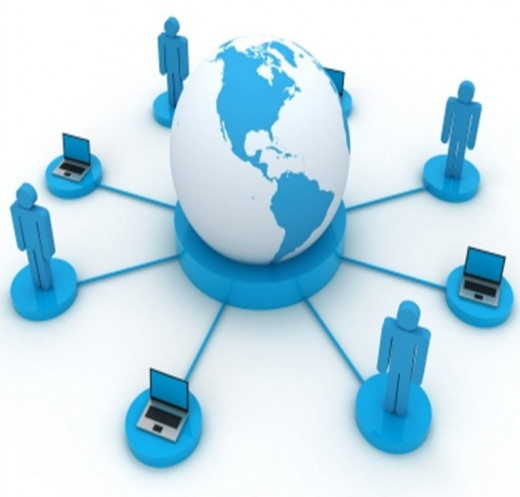
Internet growth
- The statistics records that are related to the Internet suggest that it is continuously growing at exponential rates. According to the latest report of the Task Force of the European Commission, the Internet connectivity is rapidly expanding in terms of geographical distribution and range of communication services [1].
- The number of users who use the mobile phones for web internet had been doubled since the year 2006 after effectively introducing smart phones. During year 2012, the number of mobile and wireless users outnumbered the wired ones. And in parallel to that, the stored information and data are growing as well or even faster.
What is your preferances
Restructuring the Internet
- The Future Internet [2, 3] is the initiative that is driven from the idea of reorganizing the chaotic current Internet.
- Current application environments within the Internet are missing important some capabilities such as the performance elasticity, scalability for future M2M communications, reliability or seamless interoperability models between the different service providers across the world.
- The Internet has to become a more secure space enabling new approaches for Quality of Service (QOS) and the service mobility to enhance the overall user-based experience
Figure 2:Direction of internet towards the future

Figure 3: Daily used internet applications
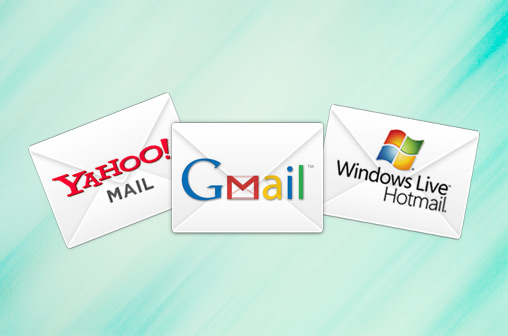
Current internet limitations
Current internet technology can be characterized by its major design principles and advantages such as: layering or modularity, packet switching techniques and intelligent end systems [4, 5].
However, current Internet architecture is progressively losing its original simplicity and transparency.
Some of the main causes are the rise of new classes of applications, additional operational, management requirements, variety of business models, security mechanisms, and scalability enablers.
Additionally, the principal and original vision of the current internet design is also under threat from basic engineering problems. The data routing systems, which are the most critical and important part of the Internet infrastructure, are facing significant scalability issues [6].
When the network core protocols may become increasingly fragile as more manual configurations are needed to avoid cascading problems due to capacity overload and hence accidental misconfiguration, or attacks may occur.
Moreover, the evolution towards Internet-based services and computing on the cloud, traditional telecom networks are expected to gradually disappear.
Therefore, built-in security mechanisms that are embedded with applications and services development process are one of the main goals of future Internet design
Figure 4:Evolutionary approach towards Internet-based services

Figure 5: Which Direction to go?

Reshaping the future Internet
- From past experiences it is obvious that the current opportunities that are existing in current network research topics, novel key innovations in technologies such as optical networks are expected to lead the development of the future Internet.
- Therefore, these aspects have to be studied with network architecture research science since they build together the future network infrastructure foundation. Modern communication infrastructures will be defined by wired and wireless broadband networks and the interconnection to ultrahigh-capacity all-optical networks.
Why do you enjoy writing about technology?
Novel application's characteristics
Since the current internet networks were specifically designed for fixed end terminals, they show inefficient performance for mobile and movable end terminals.
Hence, generic and efficient support of mobile terminals and mobile applications [7, 8] is one of the major design goals of future Internet technologies.
In addition to that, increase in number of users and connected devices & machines will require new efficient and traffic-saving application characteristics for the future Internet.
Shared content dissemination
- As the digital technologies advance, it is now expected that the majority of new media will be available in a digital form. And digital videos will not only increase in number, but also in size. This is due to the increases in pixel resolution and the. The increase in number of digital videos and their distribution over an increasing number of geographical locations creates the need for specific multimedia search engines.
- Users should also be much capable to easily share, and use online material on the Internet. Hence, an important novel idea to be provided by the future global internet network, dissemination of online content, either created by huge internet service providers or by customers, is predicted to be one of the major capabilities of the future Internet
Figure 6: Online content distribution rates
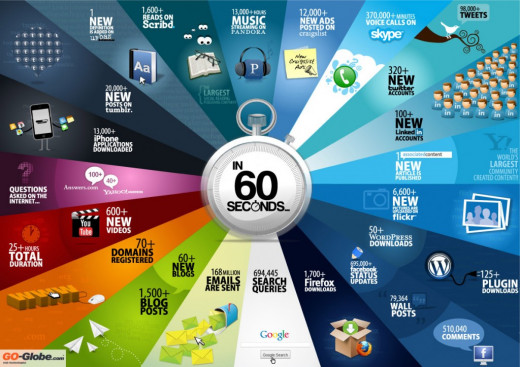
Service-oriented internet
Currently, a lot of applications, computations and storages are still executed locally on end-user devices. A service-oriented Internet will allow user access to complicated physical computing resources, data, or software’s in the form of introduced services.
Major example is the cloud computing approach [9], where large-scale and complicated data centers provide virtual access and storage environments as Internet based services with the same functionalities as physical machines but far greater flexibility and scalability.
Figure7:Public cloud architecture
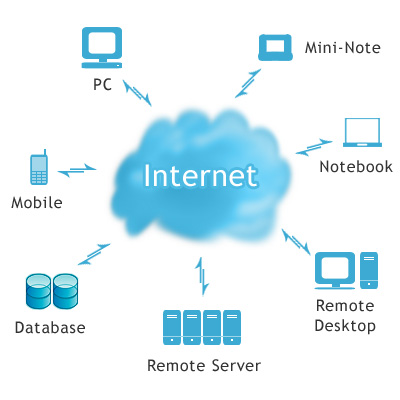
The Public Cloud
The public cloud is a series of computing services and applications that are available on the public Internet.
It includes Software as a Service applications such as Google’s Gmail, software development Platforms as a Service, such as Microsoft’s Azure platform, and Infrastructures as a Service from a wide range of vendors. However it might not be always the ultimate choice of small businesses to save money.
While this architecture model provides many of the efficiencies and financial benefits of public Software as a service,faces concerns for some businesses.
Hence, leading Cloud Service Providers realized that some corporations may prefer keeping certain applications or data privately on premises. This preference desire may result from having R&D or other highly confidential data which a business is reluctant to process off-site.
Future Internet architecture
- The future connected networks architecture targets defining unified generic communication interfaces for the future applications requirements e.g. Internet of Things, M2M communications and intelligent transportation systems.
- In addition to that, it will be based on the modularity concept that separates each component or layer of the network from the other layers. The mediation layer interconnects the application with the connectivity layer.
- The end user applications are located in the application layer on top of the other two layers and contain all the IP based services. The Telco domain offers multimedia communication services e.g. via IMS in LTE-A standard such as VoIP, video on demand or file transfer capabilities to the users.
- The Internet of Service (IoS) domain like Skype, Twitter, Google, etc. is generally driven by the best effort approaches but more users require high levels of the QoS for their services like gaming, media delivery or over the top communication services. Another upcoming application-based revolution is the Internet of Things (IoT) domain that is mainly related to machine-to-machine (M2M) communication. Devices of our daily life will be equipped with transceivers to exchange information with other intelligent units on the on the internet.
- The mediation layer is located among the other two layers to optimize and utilize resources and interfaces on the service as well as on the connectivity layer based on user requests. The Service Broker (SB) [10] is an important part of the mediation layer and includes a common service registry, repository, and Service Level Agreements (SLA) database. All those information are used to create, select and seamlessly maintain the most suitable connection between the UE and the demanded service.
Figure 8: Future connected networks’ architecture
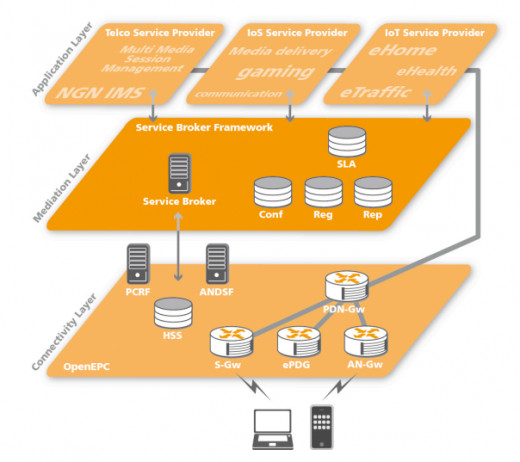
Summary and Conclusion
Future Internet technology has been considered as the emerging scheme for future communication networks and services.Additionally, the focus on network research, underlying technologies such as mobile and wireless access and all-optical networks remain the major keys for future Internet advancements.
The main challenges for future Internet design are to support mobile broadband applications and higher scalability levels including quality of service support, security as well as the support of advanced high-quality content, including 3D applications.
References
[1] D. Trossen (Ed), “Starting the Discussion”, whitepaper of the EIFFEL think tank, July 2009, http://www.eiffelthinktank.eu
[2] Gyula Sallai, Future Internet Research Cooperation Centre, Debrecen, “Chapters of Future Internet Research”
[3] Borka Jerman, Laboratory for Open System and Networks, “The Future of the Internet: Tussles and Challenges in the Evolution Path as Identified by EIFFEL think tank”
[4] A. Feldmann, “Internet Clean-Slate Design: What and Why?”
[5] D. D. Clark, “The Design Philosophy of the DARPA Internet Protocols”
[6] D. D. Clark et al., “Tussle in Cyberspace: Defining tomorrow’s Internet”
[7] Bo Li, Haibo Lin, Kazem Sohraby, Chonggang Wang, “Future Internet Services and Applications”
[8] Georgios Tselentis, John Domingue, Alex Galis, Anastasius Gavras, David Hausheer, Srdjan Krco, Volkmar Lotz, Theodore Zahariadis, “Towards the Future Internet”
[9] Alexa Huth, James Cebula, “The Basics of Cloud Computing”
[10] Blotny, A.; Blum, N.; Lange, L.; Magedanz, “A platform providing bidirectional service integration for the dynamic long-tail service market”



